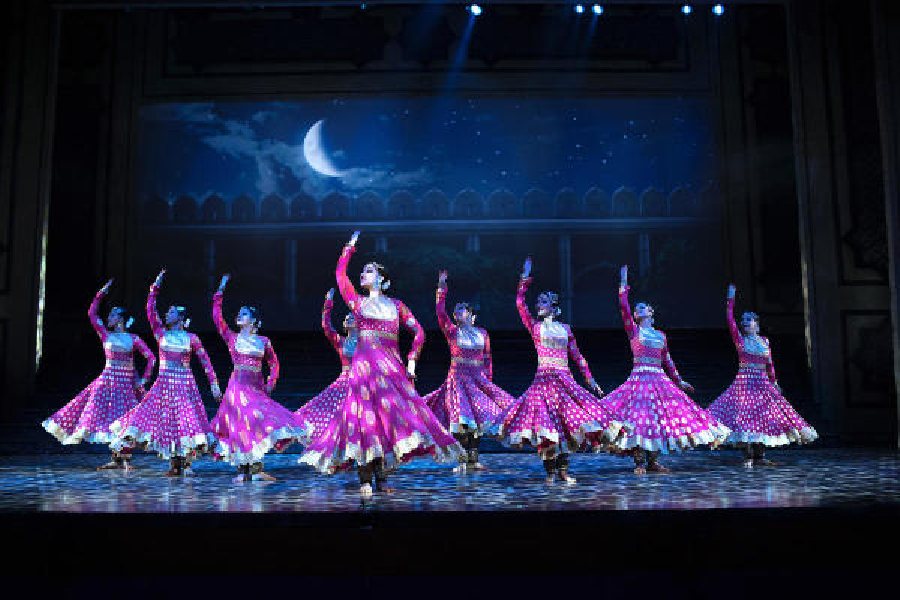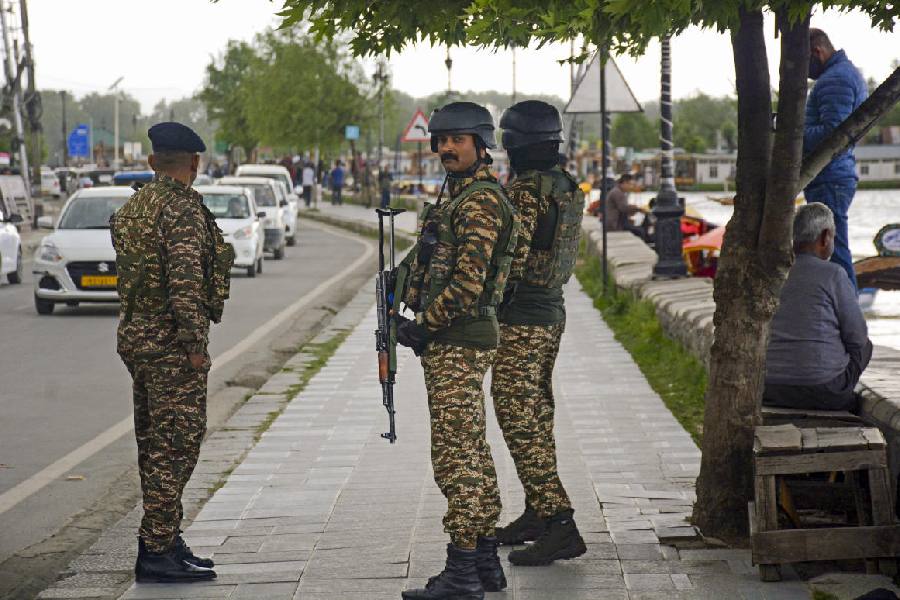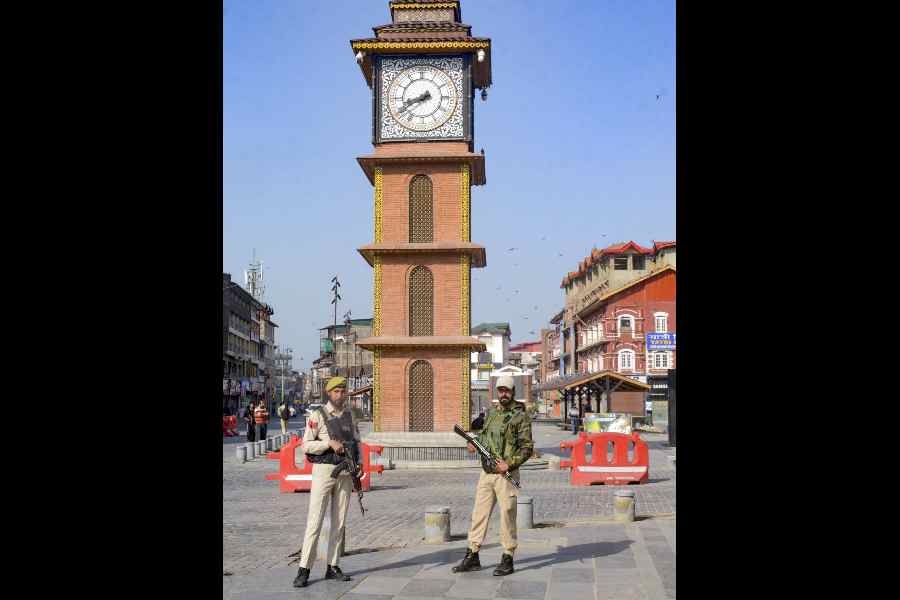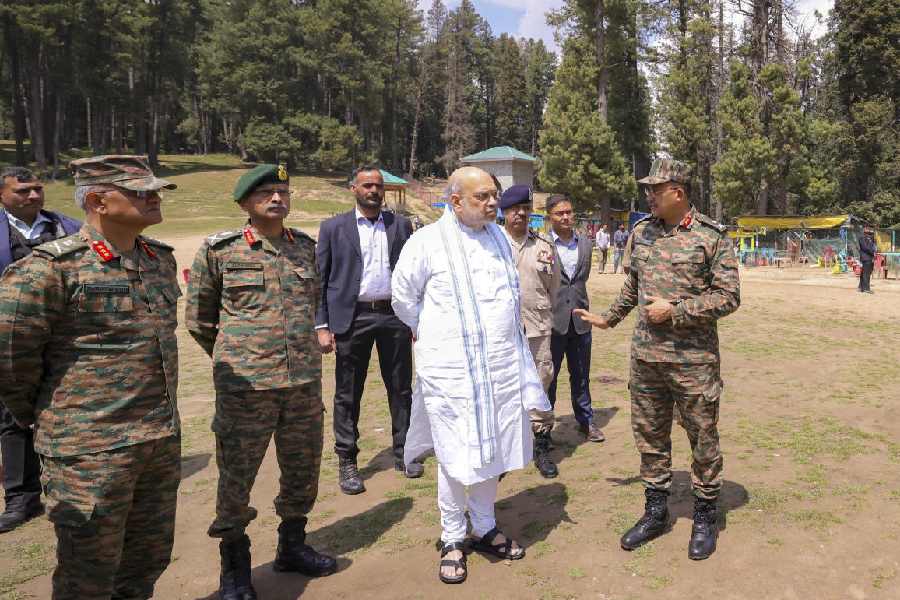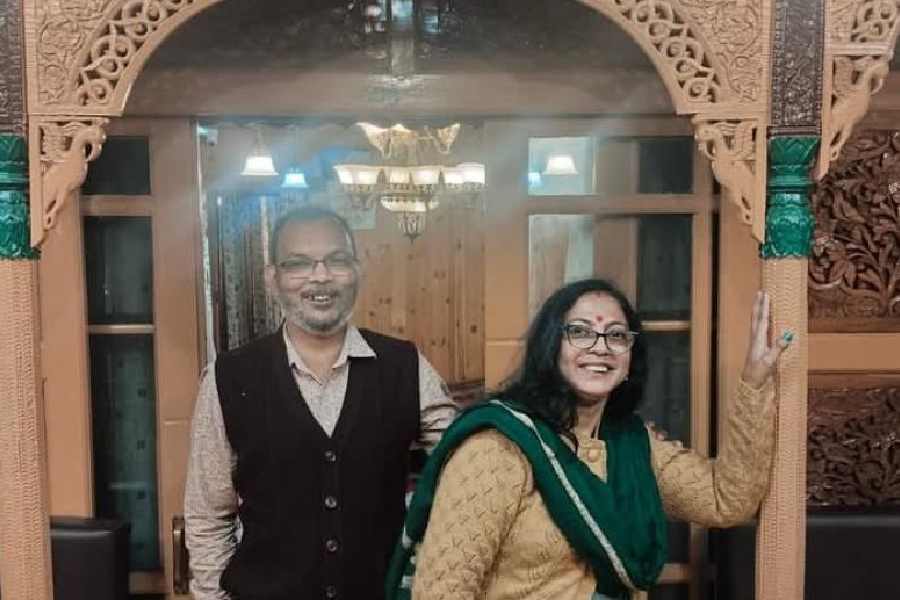The Urdu play Anarkali was written by Imtiaz Ali Taj in 1931. Taj lived in Lahore where Anarkali’s tomb stands, no matter the quibble about its authenticity. He wrote the play in 1922 but did not publish it till 1931. In between, he wrote the script for the silent film The Loves of a Moghul Prince, which was directed by Charu Roy and Prafulla Roy. In the film, the Anglo Indian actress Renee Smith played the semi-historical figure of Anarkali, a courtesan who fell in love with Prince Salim and was walled alive by Emperor Akbar for it.
The more popularly recognised, most grandiose Anarkali film is K. Asif’s Mughal-e-Azam from 1960.
“Mughal-e-Azam was always meant for the stage,” says Feroz Abbas Khan, who is the director of the musical of the same name.
Mughal-e-Azam: The Musical is India’s first Broadway-style production. It has been touring the globe since 2016 and to date, has covered eight countries and has had over 350 shows. In India, it has been staged in two cities only — Mumbai and Delhi.
In 2004, Asif’s film, the one starring Dilip Kumar, Prithviraj Kapoor and Madhubala, was released again, this time in colour. “The colour film ran for 25 weeks. That’s when we realised its potential,” says producer Deepesh Salgia. He continues, “In 1960, cinema was perhaps the right medium for Mughal-e-Azam, but in 2016, only theatre can match its grandeur.”
Adds Khan, “Every time I would watch a Broadway play, I would be in awe but also feel a deep sadness that India does not have something similar. Something like the helicopter landing on stage in Miss Saigon, or the music in The Phantom of the Opera and Les Miserables, or the light work in Cats or The Lion King. We wanted something of that scale.”
The aim was to have a global presentation but to keep “the soul of the story Indian”. Salgia talks about how the light designers, art directors and production designers are all from Broadway. Khan adds, “A lot of research went into creating the set. Akbar’s throne was designed after careful reference to Mughal architecture. As for the sheeshmahal in the film, on stage you cannot create a 360° experience of the same, so we hang mirrors. Craft and technology go hand in hand.”
And then there is that dash of Bollywood. Costumes stitched in silk and zardozi come from Manish Malhotra, no less. The actors are from different parts of India, from Jammu and Kashmir to Tamil Nadu, from Bihar to Rajasthan. Priyanka Barwe, who plays Anarkali in the play, is a singer by profession. She says, “Our director did not want us to imitate Madhubalaji.” She continues, “There are subtle changes in every performance. Over the years, I have grown and matured with the character.”
Shahab Ali, who plays Salim, is a professional theatre actor. He says, “I was told to approach Salim differently. At his core, Salim is a poet, an artist who does not believe in arbitrary rules or hierarchy of classes — he seeks freedom from it all.”
Not many can claim to have seen The Loves of a Moghul Prince, and now the film does not even exist. Film archivist Shivendra Singh Dungarpur says, “The same year, another film Anarkali, directed by R.S. Chowdhary, was released. In 1953, another film with the same name starring Bina Rai and Pradeep Kumar. The first two films are lost now, but you can trace the Indian audience’s obsession with the story of Anarkali back to this era.”
Khan says, “We develop-ed the play in the style of Hindustani or Urdu theatre. Dialogue-baazi and poetry is at the heart of it.”
Says choreographer Mayuri Upadhyay, “I insisted we have trained Kathak dancers who live, breathe and understand the dance form. So we travelled to different parts of the country and recruited about 26 to 28 dancers.” Her brief from the makers was — maintain the sanctity of the classic and don’t experiment too much.
Upadhyay says, “I have my own take on each of the songs. In Mohe Panghat Pe, I took inspiration from Radha and Krishna’s raasleela — circular, intricate movements harking back to the Jaipur gharana. In the qawwali sequence of Teri Meh-fil Mein Kismat Azmakar, we evoked envy, jealousy between Bahar Begum and Anarkali.” She continues, “But my girls are too young to be familiar with the story. I had to contemporise it. For Pyar Kiya Toh Darna Kya, I told them to think of Yash Chopra heroines in chiffon saris dancing in front of the Swiss Alps.”
In keeping with the times, the female voices in the play are stronger than those in Asif’s film. Khan says, “We tried to channel the power, the audacity of Anarkali who tells Akbar, the most powerful man on Earth, ‘parda nahi jab koi khuda se, bado se parda karna kya’.”
Some say that the old tomb in Lahore has little to do with the tragic courtesan, merely takes its names from the pomegranate garden that was its setting. Others draw attention to the Persian inscription on the sarcophagus inside the tomb and the love story it reinforces. The couplet reads: “I would give thanks unto my God unto the day of resurrection/Ah! Could I behold the face of my beloved once more.”
It is signed Majnun Salim Akbar — meaning, the “profoundly enamoured sonof Akbar”.

